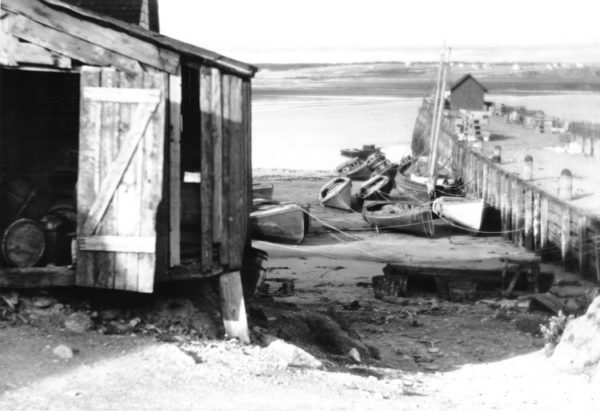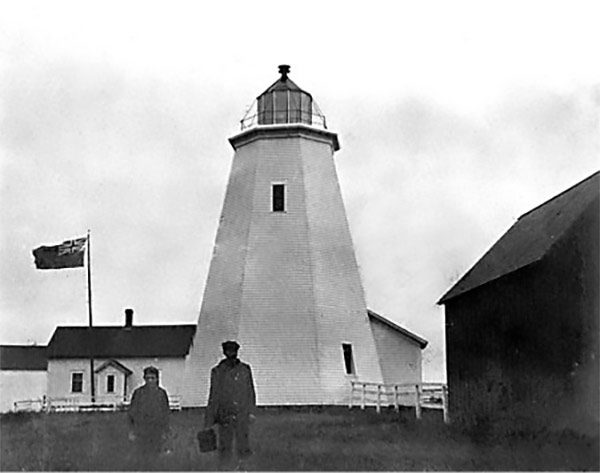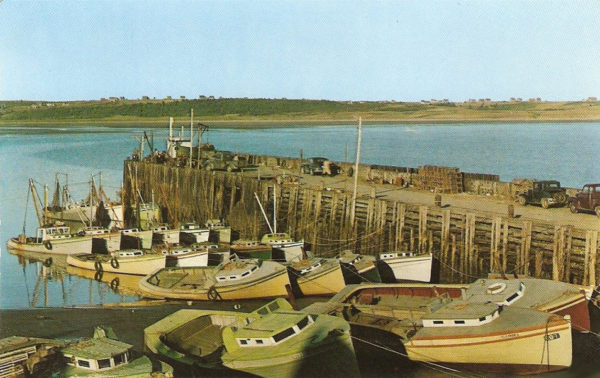About the Park
Cape Saint Mary Lighthouse Park
Welcome to the official website of the Cape Saint Mary Lighthouse Park, the newest park in the Municipality of Clare. Cape Saint Mary is the western most spot on the Nova Scotia mainland, providing visitors with expansive views of dramatic cliffs and breathtaking sunsets over Saint Mary’s Bay and the Gulf of Maine. Located in the active fishing and boatbuilding village of Cape Saint Mary (Cap Sainte-Marie), the lighthouse is a three minute drive from beautiful Mavillette Beach Provincial Park.
On January 10, 2017, the Municipality of the District of Clare legally took possession of the Cape Saint Mary Lighthouse and property, following a divestiture process with the federal government .
Work began in July 2017 with the repainting of the tower, replacement of the roof, and replacement of the vinyl siding with cedar shingles. Along the cliff side of the property, the chain-link fence has been replaced with nautical-style post and rope. To handle the increase in visitation, a gravel parking lot has been created to accommodate over 30 vehicles. A granite boulder fence encloses the park and parking lot.
A viewing scope has been installed for visitors to enjoy observing fishing boats, sea birds and other surprises, free of charge. Other visitor amenities include a new welcome sign, a picnic shelter accessible for wheelchairs, concrete benches and interpretive panels explaining the founding of the village, history of the lighthouse, the local marine ecology, and even the fog.
The centrepiece of the park is a granite monument commemorating those lost to the sea in the Municipality of Clare. Local sculptor Marc Graff had been commissioned to carve the granite mariner that sits proudly atop the monument. This site offers visitors a quiet yet powerful area of reflection overlooking the panoramic vistas of the Cape.
The official opening of the park and unveiling of the monument took place on Thursday, July 5, 2018. Portable toilets were added in summer 2019.
In addition to this website, the marketing plan for the park includes a webcam, a Facebook page, drone photography and hosting events. A new community sign has been installed on Highway 101 just before Exit 32, displaying a graphic design of Mavillette Beach and Cape Saint Mary Lighthouse.
Project funding was provided by the Municipality of Clare and the Government of Canada. The federal government will continue to maintain the lighthouse’s navigational equipment.
Please visit our Photo Gallery!
History
French Acadian families began settling at Cape Saint Mary in 1804. The ocean off the Cape teemed with herring, cod, and mackerel as well as many other fish species. The fishers of Cape Saint Mary went out to sea in small open boats known locally as ‘barchettes’ (little barques) powered by oars or sails, and they processed their catches onshore by salting, pickling or drying. Fish exports and boatbuilding were the main sources of revenue in the village, but villagers also farmed and gathered food from the land. Beginning in 1888, a steamboat connected this isolated village with other ports along the bay, carrying passengers, mail and cargo.
Beginning in the late 1800s, the fishers outfitted their small boats with one-cylinder gas engines commonly known as ‘pok-poks’. By the early 1900s, many fishers turned to fishing for lobster with traps and buoys. At a cannery in the village, lobsters were cooked, cleaned and packaged in tins for export. Fishers gradually upgraded their vessels to the larger ‘Cape Island’ style boats with open decks on the stern for handling traps and gear.
For the protection of mariners, two lighthouses have been built on the headland at Cape Saint Mary. The original lighthouse, dating from 1868, was a wooden octagonal tower 13.1 meters high (approximately 43 feet) bearing a revolving light flashing white and red every 30 seconds. A lighthouse keeper was employed full time to keep the mechanisms working. A two-tone foghorn station was added in 1914. At that time the site included a house, barn and outbuildings supplied for the use of the lighthouse keeper and his family. The second lighthouse, built in 1965, is a 3-meter square tower (approximately 10 feet) constructed atop a one-story concrete block building. It rises to a height of 8.8 meters (29 feet) and is equipped with a 500-watt light flashing every five seconds and operates only at night. It was automated in 1989.

Photograph by W.R.MacAskill, courtesy of Nova Scotia Archives and Record Management.

Photograph courtesy of Nova Scotia Archives and Record Management.

Photograph courtesy of Harold Robicheau

Photograph courtesy Nova Scotia Archives and Record Management

Cape Saint Mary circa 1897
Photograph courtesy Gerald Comeau and Harold Robicheau
Lost to the Sea Monument
Sculpture “Coming Home” by Marc Graff
The centrepiece of the park is a monument commemorating those lost to the sea in the Municipality of Clare. Local sculptor Marc Graff was commissioned to carve the fisherman’s bust that sits proudly atop the monument. This site offers a quiet yet powerful area of reflection overlooking the panoramic vistas of the Cape.
Dedicated to the memory of those who have been lost to the sea during the 250 years since the foundation of Clare and as a tribute to those who continue to occupy their business in the great waters. We honour those named as well as those not yet known to us.
This monument was a project coordinated by the Société acadienne de Clare, the Société historique acadienne de la Baie Sainte-Marie, the Centre acadien of Université Sainte-Anne and the Municipality of Clare. We wish to thank the fishermen, residents and businesses of Clare, as well as the Government of Canada, for their financial contributions.
Official Unveiling of the Monument, July 2018
Video production: Maslow2424 with photographs and videos by Ted Hurst and Germaine Comeau, music by Van Morrison and Daniel Lanois.
Mavillette Beach
Mavillette Beach Provincial Park, located two kilometres from the Cape Saint Mary Lighthouse Park, is a 1.5 km long sandy beach backed by fragile marram grass-covered dunes protected by boardwalks. Low tide exposes sand flats; then the hot sand warms the water.
Supervised swimming on Saturdays and Sundays in the months of July and August, the park facilities include change houses, vault toilets, freshwater taps, interpretive panels, and three parking areas and boardwalks to access the beach.
